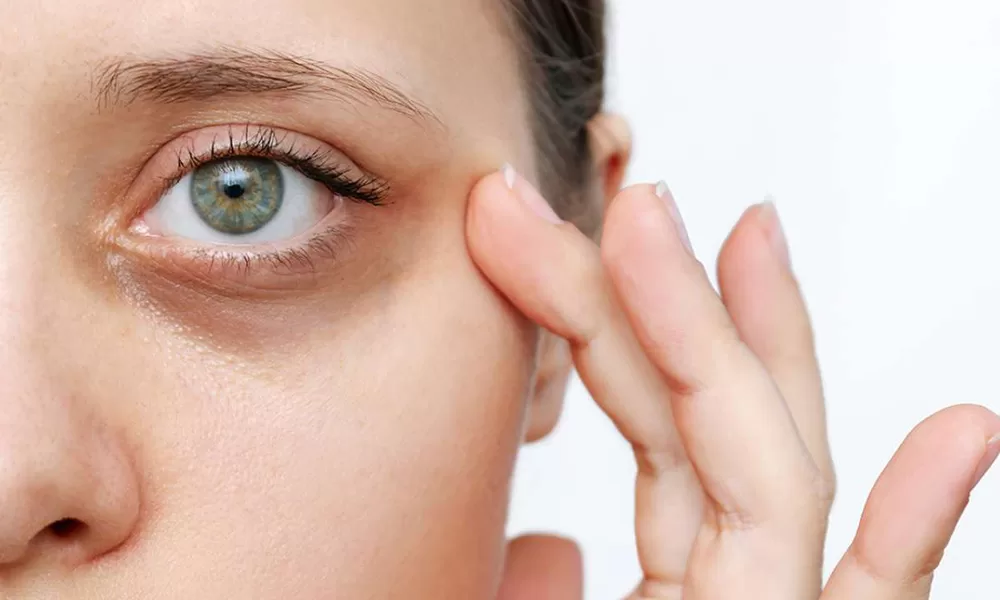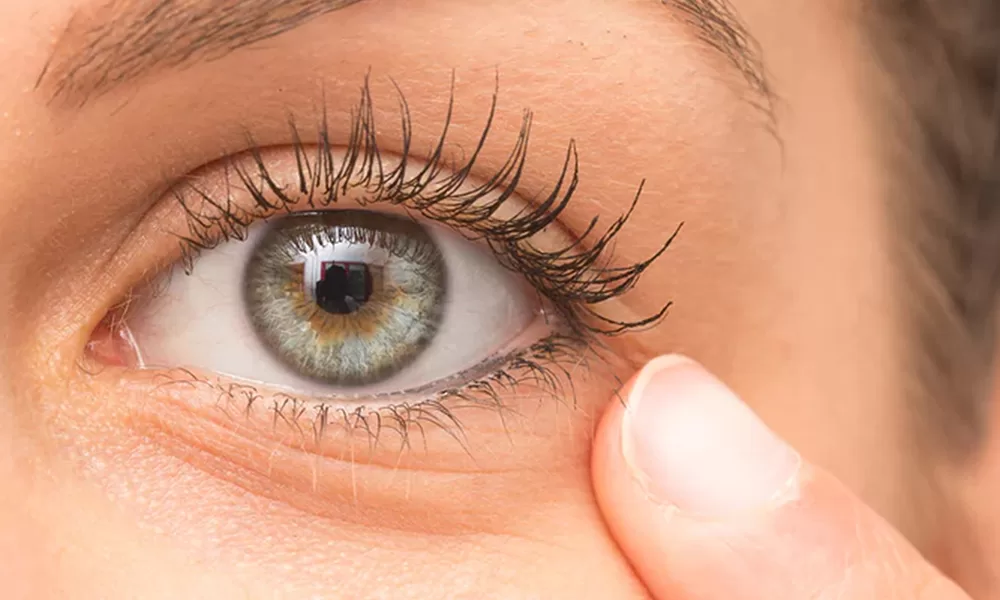What are the causes of droopy eyes and how to treat them?
Blepharoptosis, also known as ptosis, describes a condition where the muscles responsible for lifting the eyelid malfunction, resulting in a droopy appearance. Depending on its severity, ptosis may obstruct the pupil, affecting vision, or simply pose a cosmetic concern.
While some individuals are born with congenital ptosis due to underdeveloped levator muscles, others develop acquired ptosis later in life. In congenital cases, the levator muscle fails to develop properly from birth, leading to inadequate support for fully opening the eyelid. If untreated, congenital ptosis can contribute to conditions like amblyopia or astigmatism, leading to blurred vision.
Acquired ptosis typically manifests in adulthood and can stem from various causes. Commonly, the eyelid muscles maintain normal strength but may become stretched or detached from underlying tissues. According to Valeri Rusco, founder of Direct Aesthetics in Michigan, factors such as eye surgery or prolonged use of hard contact lenses can weaken eyelid muscles.
Sudden sagging of the eyelid may indicate an underlying medical issue, particularly in young individuals. Prompt evaluation by a medical professional is recommended to rule out any potential medical causes before considering treatment options for ptosis. Upper eyelid ptosis, in particular, may signal a more serious condition like myasthenia, a neurological disorder. Therefore, thorough medical assessment is crucial before undergoing any corrective measures.
What is ptosis and how do people get it?
Sagging skin around the upper eyelid often signals ptosis or blepharoptosis, a condition characterized by the drooping of one (unilateral) or both (bilateral) upper eyelids over the eyes. This drooping is typically attributed to strain in the frontalis muscle.
Located on the upper face, the frontalis muscles extend upward and laterally across the forehead. When engaged in expressions such as laughing or squinting, these muscles contract, causing eyebrow elevation. However, repeated frontalis muscle movements over time may result in the formation of horizontal lines across the forehead or the development of excess skin, leading to heaviness in the eyelids and subsequent drooping.
Can eyelid ptosis go away by itself?
Eyelid ptosis may sometimes improve on its own, particularly in children, as their facial structures develop. However, whether it resolves spontaneously depends on factors such as the underlying cause and severity of the ptosis. Consulting a medical professional is advisable to assess the condition and determine appropriate management options.
Congenital and acquired eyelid ptosis
Ptosis can affect both children and adults. When it occurs at an early age, it’s known as congenital ptosis, characterized by the abnormal positioning of the upper eyelid present from birth or emerging within the first year of life. It can be associated with eye movement issues, eye muscle disease, or potential tumors.
Children with congenital ptosis may experience vision difficulties, putting them at risk for more severe impairments. Amblyopia, or lazy eye, may develop, wherein one eye has better vision due to incomplete nerve cell maturation. Other potential effects include astigmatism (eye curvature leading to blurred vision) and strabismus (misaligned or crossed eyes).
Similarly, adults can develop ptosis due to stretching or tearing of the eyelid muscle, termed involutional or acquired ptosis. Aging-related loss of eyelid skin elasticity or eye injuries from rubbing, rigid contact lens use, or trauma from surgery can contribute to this condition.
Certain medical conditions like diabetes can also lead to droopy eyelids by damaging blood vessels, particularly affecting the oculomotor nerves and restricting muscle movement. Additionally, hormonal imbalances associated with thyroid diseases may cause neuromuscular disorders, disrupting normal eye function and contributing to ptosis.
Ptosis after Botox
Many individuals seeking to address Crow’s feet, forehead wrinkles, and frown lines turn to Botox cosmetic injections. This minimally invasive procedure aims to diminish the visible signs of aging and restore a youthful appearance by injecting a neurotoxin known as botulinum toxin.
Botox injections work by weakening or paralyzing targeted muscles to prevent them from contracting. Facial expressions often lead to muscle tension, resulting in the formation of wrinkles. By limiting muscle movement, Botox helps reduce the prominence of deep creases and fine lines, gradually smoothing them out as the treatment takes effect.
Common injection sites for Botox include areas between the eyebrows, on the forehead, and around and under the eyes. This procedure is generally considered safe and noninvasive, as injections are precisely administered to the desired areas.
Clients receiving Botox are typically advised to take precautions and avoid touching or disturbing the injection site to prevent the toxin from spreading to unintended areas. Dispersed Botox in the forehead can affect brow muscles, leading to sagging brows or eyebrow droop. Similarly, injections between the eyebrows can cause temporary droopy eyelids by affecting levator muscles.
Although rare, approximately 5% of individuals may experience drooping eyelids as a side effect of Botox treatment. Symptoms may include weakness and heaviness in the eye muscles, difficulty opening the eyelid, and peripheral and central vision problems.
Treatment options for droopy eyes

Droopy or heavy eyelids can significantly impact one’s self-confidence, as they may convey a perpetual tiredness or age the appearance prematurely. Despite the desire for improvement, the invasive nature of surgical procedures can dissuade individuals from seeking treatment. Fortunately, non-invasive options offer viable alternatives for rejuvenating the eyelid area without the need for surgery.
Non-invasive treatment options encompass various approaches aimed at addressing eyelid concerns while minimizing downtime and discomfort. These may include:
Botox
Botox is known to have a brow-lifting effect, which can also help elevate mildly drooping eyelids. When administered skillfully into the facial muscles responsible for pulling the brow down, particularly the depressor muscles around the eyes, it allows the frontalis muscles, responsible for lifting the brow, to exert more influence, resulting in a visibly lifted appearance.
However, it’s important to note that while neurotoxins like Botox can effectively address drooping brows and eyelids, the results are temporary, typically lasting between three to six months.
Injectable fillers
Injectable fillers offer a solution to enhance the appearance of a drooping eyelid by injecting them into the fat pad just beneath the brow. This technique subtly plumps up the upper eye area, effectively reducing sagging.
Additionally, fat loss in the temples can contribute to a drooping outer brow. Injecting filler into the temples helps elevate the outer brow, resulting in a more lifted appearance of the eye area.
While dermal filler treatments typically involve minimal downtime, patients may experience bruising and mild swelling. However, these side effects are temporary. Results from filler injections can last approximately a year, providing long-lasting enhancement to the eye area.
Upneeq Eye Drops
Upneeq presents a novel non-surgical approach to address drooping upper eyelids. Unlike ptosis repair surgery, which permanently tightens the muscles surrounding the eyelid, Upneeq utilizes daily eye drops to contract the muscle and elevate the lid.
Medical professionals suggest that this treatment can yield comparable outcomes to surgery for individuals with mild to moderate ptosis. However, its effects are temporary, with the drops lasting approximately six hours and can be used multiple times a day.
However, Upneeq may not be suitable for everyone. Individuals with severe ptosis or those whose condition is caused by excess skin or fat around the eye may not experience optimal results. Moreover, it’s not a long-term solution and may lead to side effects such as rebound redness, dry eyes, blurred vision, and irritation if overused.
Related: How can I improve droopy eyes at home?
Addressing ptosis after Botox administration
Droopy eyes resulting from Botox typically improve within 4 to 6 weeks as the toxin wears off. However, during this waiting period, several immediate treatments can help alleviate the issue, including:
Exercise the muscles
Stimulating the affected muscles can help reduce the appearance of ptosis. It also speeds up the amount of time the toxin needs to dissolve, allowing the eyelid to naturally elevate. This can be done through applying pressure on the forehead to push them up or repeatedly creating circles through gentle rubs with thumb and index fingers.
Some doctors also recommend applying electrical stimulation using the back of an electric toothbrush over the affected area. This wakes up the muscles that were relaxed from the Botox injection.
Oxymetazoline eye drops
Upneeq eye drops harness the active ingredient oxymetazoline to achieve their desired effect. Oxymetazoline operates by targeting the alpha-adrenergic receptors located within the Müller’s muscle, a key component responsible for lifting the eyelid. By stimulating these receptors, Upneeq facilitates the elevation of the eyelid, thereby addressing drooping eyelids (ptosis).
This mechanism of action underscores the efficacy of Upneeq in providing a non-surgical solution for individuals seeking to enhance the appearance of their eyes.
Return for Botox
To address the lingering effects of initial Botox treatment, additional injections may be advised. These injections serve to activate alternative facial muscles, effectively correcting droopy eyes.
New units of Botox can be strategically injected into the forehead to alleviate brow heaviness, while injections placed under the eyes can promote a wider eye appearance. Additionally, a Botox brow lift may be administered to elevate sagging eyebrows, further reducing the appearance of droopiness around the eyes.









